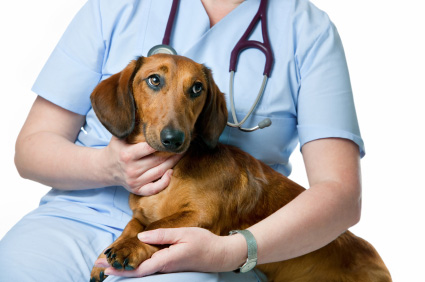On the other hand, if you do notice a change in your pet’s behavior then this should be an immediate red flag. Other red flags include fatigue, food avoidance, or inexplicable limping. Symptoms of an infected lump may include red swelling, foul odor coming from the lump, and obvious pain or tenderness associated with the area. Bumps that appear overnight could be due to an abscess, an infection in a wound. Of course, the ‘worst case scenario’ for many is that a bump will prove to be a cancerous tumor. If left unchecked, malignant tumors can grow and spread to other parts of the body. It probably bears repeating … if there’s any question about what’s going on with your dog or cat, take them to the vet for testing.
When you bring your pet in to see your vet, he or she will ask you some questions regarding when you first noticed the lump or swelling, whether you’ve noticed any changes in its appearance, and more. These questions are necessary for your vet to start narrowing down the possible causes and treatments needed. Don’t be alarmed if your vet uses the terms mass, tumor, or growth when referring to any bumps. These are simply medical terms used to describe any swellings and does not automatically mean a cancerous diagnosis. Additionally, your vet will likely perform a physical examination from head to tail. This exam is critical for the assessment of your pet’s health state, and to determine whether there are multiple lumps present (i.e., any that you might’ve missed in your home exam). The look and feel of a bump can give your vet a lot of insight towards what could be wrong. Further testing may be needed to successfully establish the source of the trouble.
After the physical exam, your vet will either offer some immediate treatment options if nothing serious is going on, or ask for permission to conduct further diagnostic testing. A simple test, known as cytology (Greek for ‘the study of cells’) of the lump, may be initially recommended. During this test, a needle is inserted into the bump or swelling, and cells are extracted. The sample will be studied under a microscope for further analysis. The only problem with cytology is that the results can provide only a limited amount of information. If this procedure does not provide a sufficient explanation for the problem, your vet may recommend a biopsy.
There are two types of biopsies: incisional and excisional. With an incisional biopsy, a small amount of the lump is sampled and sent out for analysis. An excisional biopsy requires the removal of the entire mass or swelling, also sent out for analysis. Your pet may need local anesthesia or general sedation before a biopsy is performed, dependent upon the size and location of the mass, as well as the behavioral temperament of your companion.
Ultimately, treatment options will depend on the results of the lump’s analysis. Your vet may determine that the lump or swelling is only cosmetic and poses no threat to your pet kid’s health. In this case, you will want to keep a close eye on the area and notify your vet of any changes. If the diagnosis is more serious, your veterinarian will discuss all available treatment options to address, and hopefully heal, whatever’s going on.
If you remember nothing else, the take-away here is that your greatest resource in diagnosing and treating any skin problem is your vet.
Thank you for all you do to make the world a better place for companion animals.

Dr. Jane Bicks DVM








 RSS Feed
RSS Feed




